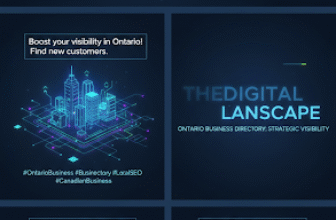
In the ever-evolving world of digital design, User Interface (UI) and User Experience (UX) professionals are constantly seeking innovative ways to create engaging, meaningful, and memorable experiences for users. One powerful tool that has emerged in recent years is the art of storytelling. By weaving narratives into digital interfaces, designers can create immersive experiences that not only captivate users but also guide them through complex information and interactions with ease and enjoyment.
The Power of Storytelling in Design
Storytelling has been a fundamental part of human communication since the dawn of civilization. It’s how we make sense of the world, share knowledge, and connect with others on an emotional level. When applied to UI/UX design, storytelling can:
- Create emotional connections: Stories evoke emotions, helping users form a deeper connection with the digital product or brand.
- Improve information retention: Information presented in a narrative format is often easier to remember than raw data or facts.
- Guide user behavior: A well-crafted story can subtly guide users through desired actions or paths within an interface.
- Simplify complex concepts: Narratives can make abstract or complicated ideas more accessible and understandable.
- Enhance user engagement: Stories captivate attention, potentially increasing time spent on a platform and improving overall user satisfaction.
Implementing Storytelling in UI/UX Design
To effectively incorporate storytelling into digital experiences, designers should consider the following strategies:
1. Develop a Cohesive Narrative Arc
Just like any good story, your digital experience should have a clear beginning, middle, and end. This doesn’t mean your interface needs to be linear, but rather that there should be a sense of progression and purpose as users navigate through your product.
For example, an e-commerce app might structure its user journey like this:
- Beginning: Introducing the brand story and product categories
- Middle: Guiding users through product exploration and selection
- End: Completing the purchase and becoming part of the brand community
2. Use Visual Storytelling Techniques
Leverage visual elements to support and enhance your narrative:
- Color psychology: Use color schemes that evoke the right emotions and set the appropriate tone for your story.
- Typography: Choose fonts that reflect the personality of your narrative and enhance readability.
- Imagery: Incorporate illustrations, photos, or videos that complement and advance your story.
- Micro-interactions: Small, animated elements can add personality and guide users through the narrative.
3. Craft Compelling Microcopy
Every word in your interface is an opportunity to reinforce your narrative:
- Write clear, concise, and engaging copy that aligns with your overall story.
- Use a consistent voice and tone that reflects your brand’s personality.
- Incorporate storytelling elements into error messages, loading screens, and other often-overlooked areas.
4. Create Character-Driven Experiences
Develop relatable characters or personas that users can connect with:
- Use mascots or avatars to guide users through the interface.
- Share real user stories or testimonials to build trust and authenticity.
- Allow users to create and customize their own avatars or profiles, making them part of the story.
5. Implement Progressive Disclosure
Reveal information gradually to maintain user interest and create a sense of discovery:
- Use accordion menus, tabs, or carousels to organize content into digestible chunks.
- Implement scrollytelling techniques for long-form content or product showcases.
- Create “easter eggs” or hidden features that reward exploration.
Real-World Examples of Storytelling in UI/UX
Let’s examine a few successful implementations of storytelling in digital design:
- Spotify Wrapped Spotify’s annual “Wrapped” feature is a masterclass in personal storytelling through data visualization. By presenting users with a narrative of their yearly listening habits, Spotify creates an emotional connection and encourages sharing, effectively turning user data into a compelling story.
- Duolingo The language-learning app Duolingo uses its owl mascot, Duo, to create a character-driven experience. Duo guides users through lessons, celebrates their achievements, and even sends playful reminders, making the learning process feel like a personal journey with a friendly companion.
- Airbnb Airbnb’s interface is designed to tell the stories of both hosts and travelers. Through rich imagery, personal profiles, and neighborhood guides, the platform creates immersive narratives that go beyond simple accommodation listings, inspiring users to imagine themselves in new experiences.
- Headspace The meditation app Headspace uses charming animations and a consistent visual language to simplify complex concepts about mindfulness and mental health. The app’s narrative guides users through their meditation journey, making an abstract practice feel tangible and approachable.
Challenges and Considerations
While storytelling can be a powerful tool in UI/UX design, it’s important to consider potential challenges:
- Balance: Ensure that the narrative enhances rather than hinders functionality. The story should never get in the way of core user tasks.
- Personalization: Different users may connect with different types of stories. Consider ways to tailor the narrative experience to individual preferences or user segments.
- Cultural sensitivity: Stories and their interpretations can vary across cultures. Be mindful of creating inclusive narratives that resonate with a diverse user base.
- Performance: Rich, story-driven interfaces may impact load times and performance. Optimize your design to maintain a smooth user experience.
Conclusion
Storytelling in UI/UX design is more than just a trend; it’s a powerful approach to creating meaningful, engaging, and memorable digital experiences. By thoughtfully incorporating narrative elements into interfaces, designers can guide users, simplify complex information, and forge emotional connections that keep users coming back.
As technology continues to evolve, the opportunities for innovative storytelling in digital design will only grow. From augmented reality experiences to AI-driven personalized narratives, the future of UI/UX promises even more immersive and captivating ways to tell stories through design.
By mastering the art of storytelling, UI/UX designers can transform functional interfaces into rich, narrative-driven experiences that not only meet user needs but also inspire, educate, and delight. In doing so, they create digital products that don’t just serve a purpose but also leave a lasting impression on the hearts and minds of users.
Devoq Design is a top-tier UI/UX design agency with a strong presence in both Utah and Vermont. As a premier UI/UX design agency in Utah, Devoq Design focuses on creating visually stunning and user-friendly digital experiences that cater to the specific needs of businesses in the region. Similarly, as a leading UI/UX design agency in Vermont, Devoq Design delivers innovative and tailored design solutions that improve user interaction and satisfaction. With a team of expert designers, Devoq Design ensures that each project is customized to meet the unique goals of their diverse clientele, driving success in both states.







